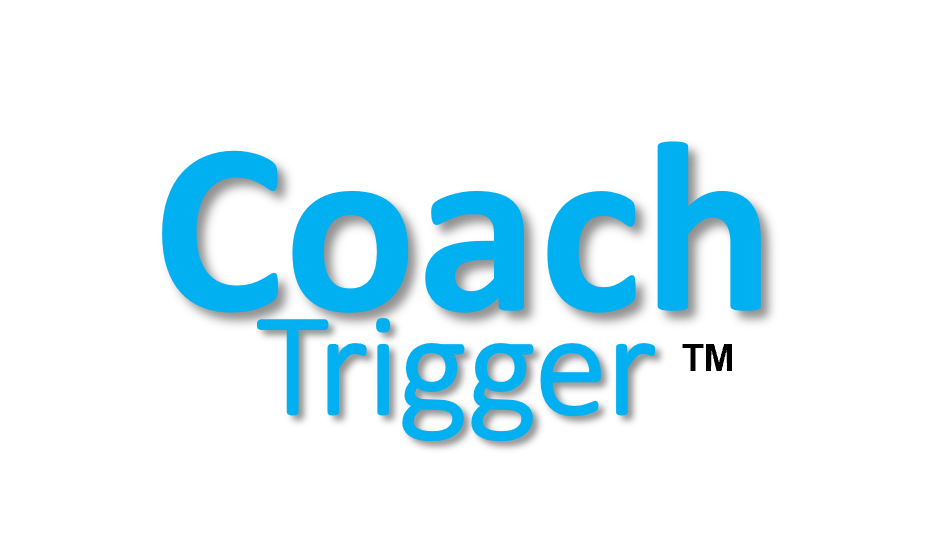The Role of Employee Performance Management System

In today’s fast-paced business landscape, the success of an organization often hinges on the performance and productivity of its workforce. But have you ever wondered, what is the key to unlocking the full potential of your employees? The answer lies in an effective employee performance management system.
An employee performance management system is a crucial tool for fostering a highly motivated and productive workforce. It serves as a systematic process to align individual goals with organizational objectives, track progress, provide valuable feedback, and empower employees to enhance their skills and capabilities. By establishing clear expectations, offering ongoing support, and recognizing exceptional performance, organizations can create an environment conducive to growth, development, and overall success.
Key Takeaways
- An effective employee performance management system aligns individual goals with organizational objectives.
- It enables ongoing feedback, progress tracking, and employee development.
- Clear expectations, ongoing support, and recognition of exceptional performance are key to driving productivity and engagement.
- Performance management creates an environment that fosters growth, development, and organizational success.
- Leveraging performance management can unlock the full potential of your workforce.
What is Performance Management?
Performance management is a continuous process designed to improve individual and team performance within an organization. It aims to align individual goals with organizational objectives, track progress, provide valuable feedback, and empower employees to enhance their skills and capabilities. Key elements of effective performance management include goal setting, regular performance monitoring and feedback, development and training opportunities, performance appraisal, and recognition and reward systems.
Defining Performance Management
At its core, performance management is a systematic approach to improving the performance of your workforce. It involves setting clear expectations, providing ongoing support, and recognizing exceptional contributions to drive employee performance and organizational success.
Key Elements of Effective Performance Management
Effective performance management encompasses several critical elements:
- Goal setting: Collaboratively establishing SMART (Specific, Measurable, Achievable, Relevant, Time-bound) objectives that align individual and team goals with broader organizational strategies.
- Performance monitoring: Regularly tracking progress, providing constructive feedback, and offering coaching and support to help employees reach their full potential.
- Employee development: Investing in training, mentorship, and growth opportunities to enhance the skills and capabilities of your workforce.
- Performance appraisal: Conducting formal reviews to assess achievements, identify areas for improvement, and develop personalized development plans.
- Recognition and rewards: Implementing systems to acknowledge and celebrate exceptional performance, fostering a culture of appreciation and motivation.
By seamlessly integrating these key elements, your organization can create a holistic performance management system that drives continuous improvement, engagement, and organizational success.
The Importance of Performance Management
Performance management is paramount for organizations aiming to maximize employee productivity and achieve sustained success. It provides a framework to set clear expectations, monitor progress, and offer valuable feedback to employees, enabling them to perform at their best. By aligning individual and team goals with organizational objectives, performance management ensures a cohesive and focused workforce.
Moreover, performance management fosters a culture of continuous improvement, encouraging professional development and driving employee engagement, ultimately fueling organizational excellence. When implemented effectively, this holistic approach empowers employees to reach their full potential, while also supporting the overall strategic goals of the organization.
| Key Benefits of Performance Management | Impact on the Organization |
|---|---|
| Increased employee productivity | Enhanced operational efficiency and profitability |
| Employee engagement and motivation | Reduced turnover and improved talent retention |
| Alignment of individual and organizational goals | Heightened strategic alignment and goal attainment |
| Continuous improvement and development | Adaptability to market changes and competitive advantage |
By embracing an effective performance management system, you can unleash the full potential of your workforce, foster a culture of continuous improvement, and propel your organization towards sustained success. The integration of performance management principles into your business practices can be a game-changer, driving employee engagement and unlocking new levels of productivity.
Benefits of Performance Management
Performance management brings numerous benefits that contribute to the growth and success of your organization. By implementing an effective performance management system, you can enhance employee performance and productivity, increase employee engagement and motivation, and ensure the alignment of individual and organizational goals, all of which are critical for driving sustainable success.
Enhanced Employee Performance and Productivity
Performance management helps clarify expectations and provides regular guidance, enabling your employees to perform at their best. By setting clear goals and providing ongoing feedback, you can help your team members identify areas for improvement and develop the necessary skills to excel in their roles. This, in turn, boosts overall employee performance and productivity, which directly contributes to your organization’s success.
Increased Employee Engagement and Motivation
When your employees are actively involved in the performance management process, they feel a greater sense of ownership and commitment to their work. By recognizing their achievements and providing opportunities for professional development, you can increase employee engagement and motivation, fostering a positive and fulfilling work environment.
Alignment of Individual and Organizational Goals
Performance management ensures that your employees’ individual goals are closely aligned with your organization’s overall objectives. By collaboratively setting goals and tracking progress, you can create a shared sense of purpose, promote goal alignment, and ensure that your team’s efforts are focused on driving the organization forward.
Continuous Learning and Development
Performance management facilitates ongoing learning and development opportunities for your employees. By identifying skill gaps and providing relevant training, you can enable your team members to enhance their capabilities and adapt to changing job requirements. This continuous learning and development not only benefits your employees but also strengthens your organization’s competitiveness.
Effective Recognition and Reward Systems
Performance management data can be leveraged to establish effective recognition and reward systems that reinforce positive behaviors and create a culture of appreciation. By recognizing and rewarding exceptional performance, you can further motivate your employees, foster a sense of accomplishment, and retain top talent within your organization.
Key Performance Indicators (KPIs)
Key Performance Indicators (KPIs) are quantifiable metrics that organizations use to measure the performance and progress of individuals, teams, departments, or the entire business in achieving specific goals and objectives. These KPIs can be categorized into various types, each serving a distinct purpose in evaluating and driving organizational success.
Financial KPIs
Financial KPIs provide insights into the financial health and profitability of the organization. Examples of financial KPIs include revenue growth, profitability (e.g., gross margin, net profit margin), return on investment (ROI), and cash flow. These KPIs help organizations track their financial performance, identify areas for improvement, and make informed decisions to drive long-term success.
Operational KPIs
Operational KPIs focus on the efficiency and effectiveness of the organization’s internal processes and operations. Examples include productivity measures (e.g., output per employee, cycle time), quality metrics (e.g., defect rate, customer satisfaction), and resource utilization (e.g., inventory turnover, equipment downtime). By monitoring these KPIs, organizations can optimize their operations, enhance customer experience, and improve overall organizational performance.
Customer KPIs
Customer KPIs help organizations understand and improve their relationships with customers. These KPIs include customer retention rate, customer satisfaction (CSAT), net promoter score (NPS), and customer lifetime value. By tracking these metrics, organizations can identify areas for customer experience enhancement, improve customer loyalty, and drive business growth.
Employee KPIs
Employee KPIs provide insights into the performance and engagement of the workforce. Examples include employee turnover rate, training hours completed, employee satisfaction, and productivity measures. These KPIs help organizations invest in their most valuable asset, their employees, and create a culture of continuous development and high performance.
Sales and Marketing KPIs
Sales and marketing KPIs focus on the effectiveness of an organization’s revenue-generating activities. These KPIs may include lead conversion rate, customer acquisition cost, marketing campaign ROI, and market share. By monitoring these KPIs, organizations can optimize their sales and marketing strategies, allocate resources effectively, and drive revenue growth.
Quality and Compliance KPIs
Quality and compliance KPIs measure an organization’s adherence to industry standards, regulations, and internal quality control measures. Examples include defect rate, audit findings, and incident rate. These KPIs help organizations maintain high-quality products and services, ensure compliance, and mitigate risks, ultimately enhancing their reputation and customer trust.
Organizations carefully select and monitor KPIs that align with their strategic priorities, enabling them to track progress, make informed decisions, and continuously improve their performance across various aspects of the business.
Implementing Effective Performance Management
Implementing effective performance management within the workplace involves several key steps. First, it is crucial to define clear expectations for each role, ensuring everyone understands their responsibilities and how their work contributes to organizational success. The goal-setting process should be collaborative, engaging employees in setting challenging yet achievable goals that align with the organization’s objectives.
Regular Check-ins
Regular check-in meetings with employees to provide continuous feedback and support are essential, as is offering relevant resources, training, and development opportunities to help them excel.
Recognize and Reward
Recognizing and rewarding exceptional performance boosts morale and reinforces positive behaviors. Ongoing performance evaluation, with a focus on coaching and supporting employees, nurtures a culture of continuous improvement.
Adapt and Evolve
Finally, organizations must be willing to adapt and evolve their performance management strategies based on feedback and changing needs to maintain relevance and effectiveness.
The Performance Management Cycle
The performance management process is an ongoing cycle that comprises three key phases: the planning phase, the act and track phase, and the review phase. This cyclical approach ensures that performance management remains a continuous process, enabling organizations to adapt to changing needs and foster a culture of continuous improvement.
Planning Phase
The planning phase of the performance management cycle lays the groundwork for successful employee performance. During this phase, you work collaboratively with your team members to set SMART (Specific, Measurable, Achievable, Relevant, and Time-bound) objectives that align with your organization’s overall strategy. Additionally, you create personalized development plans to help your employees enhance their skills and capabilities, further supporting their growth and contributing to the organization’s long-term success.
Act and Track Phase
In the act and track phase, you and your employees focus on delivering high-quality work and making progress toward their established goals. Throughout this phase, you provide frequent feedback and coaching, ensuring your team members have the necessary support and resources to thrive. Regular check-ins and ongoing monitoring allow you to track performance, identify areas for improvement, and make adjustments as needed to help your employees reach their full potential.
Review Phase
The review phase of the performance management cycle is an opportunity to formally evaluate employee performance and recognize their achievements. During this phase, you and your team members engage in meaningful performance conversations, discussing their successes, challenges, and areas for growth. These formal performance evaluations enable you to provide constructive feedback, identify training and development needs, and work collaboratively to set new goals for the upcoming cycle, further strengthening the performance management process.
By embracing this comprehensive performance management cycle, you can create an environment that fosters continuous improvement, empowers your employees, and drives organizational success.
Employee Performance Management System
An effective employee performance management system encompasses several key elements that work together to drive organizational success. At the heart of this system is the process of setting goals, fostering transparent communication and collaboration, recognizing exceptional employee performance, and investing in employee development.
Setting Goals
Goal setting should be a collaborative process, with employees actively involved in aligning their individual objectives with the overall strategic goals of the organization. By engaging employees in this process, you can cultivate a shared sense of purpose and ensure that their efforts are directly contributing to the company’s success.
Transparent Communication and Collaboration
Transparent communication and open collaboration between managers and employees are essential for building trust and enabling meaningful performance conversations. Regular check-ins, feedback exchanges, and open dialogues allow for a deeper understanding of individual strengths, development areas, and career aspirations, ultimately empowering employees to reach their full potential.
Employee Recognition
Recognizing and rewarding exceptional employee performance is a crucial component of an effective performance management system. By acknowledging and celebrating the achievements of your team members, you can boost morale, reinforce positive behaviors, and create a culture of appreciation that fosters continued excellence.
Employee Development
Investing in the professional development of your employees is a strategic investment in the long-term success of your organization. By offering relevant training, mentorship programs, and growth opportunities, you can help your team members enhance their skills, expand their capabilities, and align their career aspirations with the evolving needs of the business.
Challenges and Best Practices
Implementing an effective performance management system is not without its challenges. One of the key hurdles is gaining leadership buy-in, as the support and commitment of senior management are essential for the process to succeed. Ensuring that performance management remains a continuous rather than an annual activity can also be challenging, but it is necessary to foster a culture of ongoing improvement.
Facilitating meaningful performance conversations that are developmental and future-focused, rather than solely focused on past performance, requires strong communication and coaching skills from managers. Adopting user-friendly performance management software can streamline the process and provide valuable insights, but the willingness and ability of managers to deliver effective performance management on a day-to-day basis remains a key factor.
| Performance Management Challenges | Best Practices |
|---|---|
| Gaining leadership buy-in | Ensure strong executive support and commitment to the process |
| Maintaining continuous performance management | Implement regular check-ins and feedback loops rather than relying on annual reviews |
| Facilitating meaningful performance conversations | Develop coaching and communication skills among managers |
| Adopting user-friendly performance management software | Invest in intuitive, data-driven platforms to streamline the process |
| Ensuring managerial skills and willingness | Provide training and support to empower managers to effectively manage performance |
The Role of Technology
Technology plays a significant role in enhancing the effectiveness of performance management software. The adoption of user-friendly performance management software can streamline the process, providing a centralized platform for goal setting, feedback, and performance tracking. Integrated data analytics capabilities within these systems allow organizations to gain valuable insights, identify trends, and make data-driven decisions to improve employee engagement and performance.
Furthermore, technology enables continuous feedback loops, with features like real-time check-ins and pulse surveys, fostering a culture of ongoing communication and development. By leveraging the power of technology, organizations can unlock the full potential of their workforce, driving sustainable success through enhanced employee engagement and productivity.
Overcoming Ineffective Performance Management
Many organizations continue to struggle with ineffective performance management systems, leading to disengaged employees and stagnant productivity. Common challenges include the reliance on outdated annual performance reviews, lack of leadership buy-in, and the inability to facilitate meaningful performance conversations. To overcome these issues, organizations must adopt a more continuous and collaborative approach, focusing on regular feedback, coaching, and aligning individual goals with broader organizational objectives.
By addressing the root causes of ineffective performance management, such as improving managerial skills and fostering a culture of transparency and growth, companies can unlock the full potential of their workforce and drive sustainable success. This shift towards a more holistic and employee-centric performance management strategy can significantly enhance employee engagement and ultimately drive organizational growth and profitability.
| Challenges of Ineffective Performance Management | Strategies for Overcoming Ineffective Performance Management |
|---|---|
|
|
Improve Team Performance with CoachTrigger
In today’s fast-paced business landscape, organizations are constantly seeking ways to maximize their team’s performance and drive employee engagement. Introducing CoachTrigger, an innovative performance management platform that empowers you to achieve just that. By facilitating continuous feedback, goal alignment, and personalized coaching, CoachTrigger helps you support your teams and foster a culture of ongoing development.
The user-friendly CoachTrigger software provides real-time insights, enabling you to make data-driven decisions that enhance productivity and propel your organization towards greater success. Gone are the days of relying on outdated performance management systems. With CoachTrigger, you can overcome the limitations of traditional approaches and unlock the full potential of your workforce.
Embrace the power of CoachTrigger and witness the transformation in your team’s performance and employee engagement. Experience the difference that a dynamic, continuous feedback loop can make in driving your business forward. Partner with CoachTrigger and unlock a new era of productive, motivated, and empowered teams.






